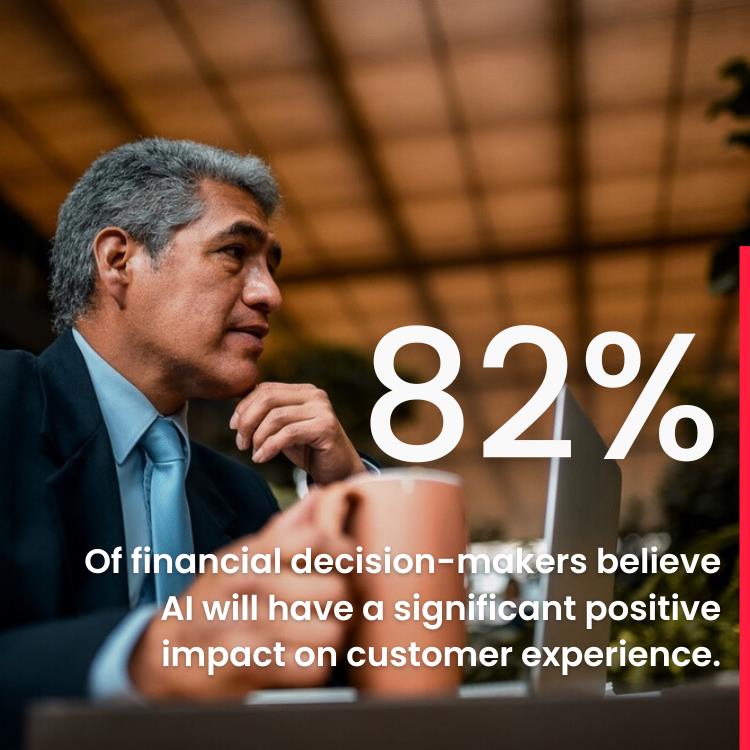April 1, 2025 • 3 Min Read
AI has been in the midst of a massive hype cycle for some time, but it’s not clear that any one enterprise AI technology has gone mainstream. Meanwhile, business leaders are navigating a target-rich environment, uncertain measures of ROI, and a host of competing priorities in their search for the tools that will have the biggest impact on their organizations’ productivity, revenue, or cost efficiency.
While just about every business leader wants to use AI and every business function could benefit from its promise, we’ll likely see AI having the greatest and widest impact on customer experience.
RGP’s Q1 Transformation Barometer found that 82% of financial decision-makers believe AI will have a significant positive impact on customer experience within their organization in the next 12 months. In fact, the leaders we surveyed expect customer service to be the function most impacted by their organization’s AI investments over the next 12 months.

A New Low
Such impact is needed. According to Forrester, in 2024 consumer perceptions of customer-experience quality reached their lowest point since the firm launched its annual CX Index in 2016. Research from Twilio shows a significant gap between how companies view their customer engagement and the reality of customer sentiment.
To reap maximum benefit from AI, organizations must change the way they think about the experience their business is creating for its key stakeholders: end customers, employees, and third-party partners. It won’t do you any good if your business employs a chatbot, but your customers overwhelmingly prefer to talk to live humans – even if they have to wait—or if the bulk of customer issues require human input to resolve.
That isn’t to say that AI can’t or won’t be useful. But how and when to employ it requires careful analysis and—dare I say it—a healthy dose of human-generated insight around the best way to use it.
Rise of the CXO
As AI is causing organizations to evolve their business models, many are expanding their C-suites with roles that support the CIO, including the emergence of chief experience officers (CXOs). Regardless of where customer experience strategy sits within an organization’s hierarchy, every C-suite leader must embrace a CXO mindset for their technology investments to have a positive impact on customer engagement and perceptions.
I am an advocate for the idea that everyone should feel that delivering a positive customer experience is part of their job. Responsibility for it does not fall into one department or onto a single person.
Organizations must create greater linkages among digital projects to maximize the impact their AI investments can have on CX.
However, every functional leader must understand how automation can affect the experience the organization is creating for its customers. This requires leaders to understand how their organization’s technology overlaps in terms of existing capabilities, training, and user knowledge. Organizations must create greater linkages among digital projects to maximize the impact their AI investments can have on CX.
They must recognize that customer service is just one aspect of a customer’s journey with their business. Also, they need to think about what the customer sees and what happens “behind the scenes” to make the magic happen.
Finally, business leaders must rethink the way customer experience has been managed and what has driven their CX strategy, including how they have calculated ROI. That means knowing which moments matter to customers and using AI where appropriate – and humans where they can make the most difference.
Related Insights
